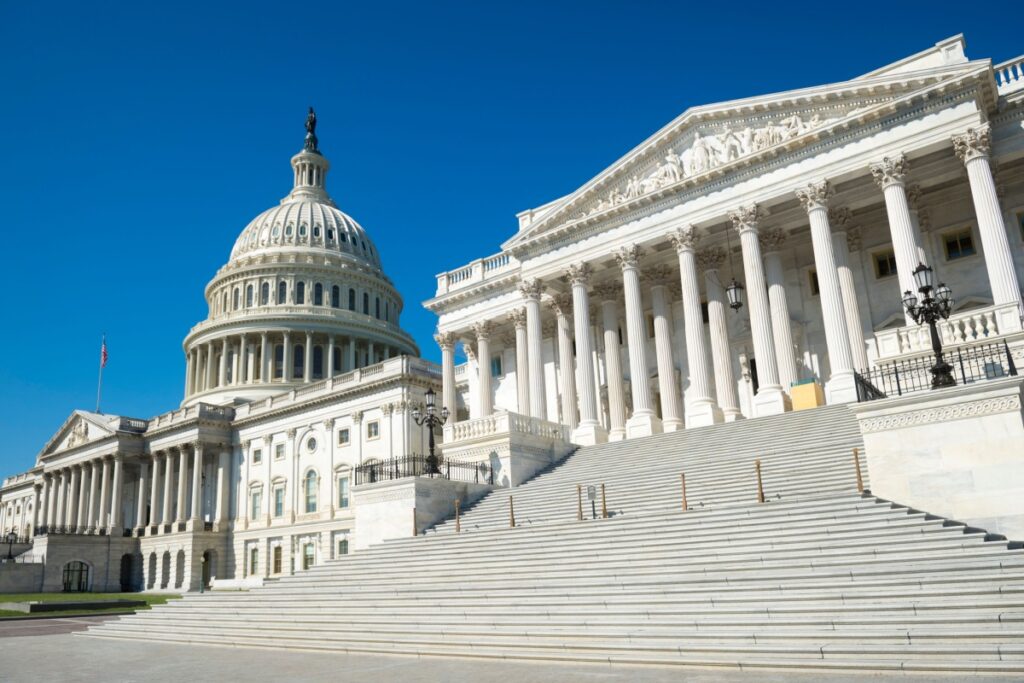The U.S. Senate approved legislation to reopen the federal government, pushing a negotiated deal to the House of Representatives for final action. The measure is a short-term stopgap that would extend funding through Jan. 30 and is intended to end the current shutdown once the House returns to Washington to vote. Senate leaders said the chamber’s passage brings the standoff markedly closer to resolution after cross-party talks produced a compromise. According to the Associated Press, the Senate’s action sets up a brief window in which the shutdown could technically persist for a few more days as House members reconvene to take up the bill.
President Donald Trump signaled support for the Senate agreement, telling reporters he would “abide by the deal,” a public stance that reduces uncertainty over whether the White House would oppose a stopgap approach. The package is designed to reverse broad employment disruptions across the federal workforce and ensure that government employees receive back pay once normal operations resume, AP reported.
House Dynamics And Leadership Stakes
Attention now shifts to the House, where Speaker Mike Johnson faces the task of steering the Senate-backed bill through a chamber that has been fractured over spending levels and policy riders in recent months. House Republicans and Democrats alike have criticized shutdown brinkmanship, but disagreements over the scope and duration of funding have repeatedly complicated efforts to keep agencies open. Photographs from the Capitol on Nov. 10, 2025 captured leaders fielding questions about the Senate vote and the next steps for the House process.
The Senate package emerged from talks that included a small group of Democratic negotiators working with Republican counterparts, a sign that bipartisan channels remain functional despite a tense fiscal environment. For House leadership, the calculation will revolve around whether to move the Senate bill to the floor swiftly, potentially under suspension or via a structured rule—to limit amendment fights that could delay passage. With the Senate already having acted, timing is central: the longer the House lingers, the longer the partial government closure strains operations at agencies with lapsed appropriations.
Key Provisions And Policy Disputes
The stopgap funding measure would keep money flowing at current levels into late January, buying negotiators additional time to hammer out full-year appropriations. The deal also reflects a shared interest across both parties in halting cascading disruptions to federal services and contractors. Senate leaders framed the resolution as a pragmatic tool to stabilize operations while talks continue on broader spending and policy differences, including disputes that have surfaced over health care subsidies and other domestic priorities during live updates.
The White House’s indication of support from President Trump lowers the risk of a veto showdown and may provide political cover for members in both chambers who prefer to avoid a prolonged standoff. At the same time, conservative and progressive blocs could still press for commitments on subsequent negotiations, foreshadowing renewed debate in January. The objective for the next several weeks will be to translate temporary peace into durable appropriations, either via omnibus legislation or a sequence of full-year bills.
Market And Agency Impact
A swift end to the shutdown would allow furloughed workers to return and unlock pay owed to employees who have been working without compensation. AP reporting notes that the agreement would guarantee back pay, addressing a central concern for hundreds of thousands of civil servants and contractors who have absorbed financial strain during the closure. The move is also expected to restore routine functions at agencies that process permits, manage research grants, support small businesses, and oversee transportation safety, among other duties.
Financial markets historically react to shutdown risks with episodic volatility rather than sustained sell-offs, but uncertainty can weigh on sentiment and delay corporate decision-making. The prospect of a near-term reopening may reduce those headwinds, though investors and federal partners will still watch the Jan. 30 deadline closely. The duration of this funding bridge, long enough to negotiate but short enough to maintain pressure, suggests lawmakers wanted to preserve leverage for a follow-on agreement early in the new year. Images from the Capitol underscored the urgency: Senate Majority Leader John Thune briefed reporters following the vote, while Speaker Mike Johnson addressed the House’s role in advancing the measure.
If the House approves the bill in the coming days, the government would reopen under status-quo spending while appropriators continue line-by-line talks. Agency contingency plans would wind down, and departments would turn to backlogs that accumulated during the lapse. For agencies with seasonal or mission-critical calendars, the return to normalcy would prevent further slippage in timelines for grants, procurement, audits, and regulatory actions. The emphasis from congressional leadership and the administration on rapid implementation reflects a shared desire to minimize the shutdown’s economic and operational footprint, even as deeper fights over long-term spending remain unresolved.


